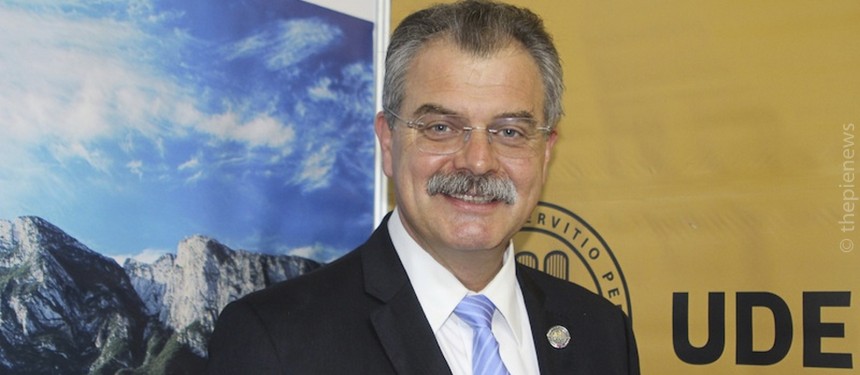TB: They keep a diary, they blog and also they connect with other students abroad. So a student from UDEM in the UK might have a conversation with one in Japan. They compare their experiences in the first week and so on. We have students all over the world with options in 60 countries which makes for a lot of interesting exchange among them.
News and business analysis for Professionals in International Education
Have some pie!
Thomas Buntru, Universidad de Monterrey

The PIE: Would you say that as a private institution UDEM has an advantage because your students are more affluent than most who can access higher education in Mexico?
We have observed that the greatest barrier to study abroad in our population is the financial barrier
TB: That’s a valid observation. We have about 12,000 students, which is smaller than most Mexican public institutions. We don’t have the political pressures, our student population is mainly upper middle class and upwards. But don’t think that all of our students swim in money. We have observed that the greatest barrier to study abroad in our population is the financial barrier. Many of the families that send their kids to universities like UDEM or other private universities here in Mexico make extreme efforts to make this education available to their children. And very often for them, the study abroad participation is an extra strain on their budget that they’re not able to absorb anymore. We have responded to it as part of our strategic plan of internationalisation by budgeting for financial aid for students to go and study abroad from the university itself.
The PIE: Apart from low income students, what other challenges do Mexican institutions face to internationalise?
TB: There is a lack of government support. There is no national policy on internationalisation or international education as such. Different associations are lobbying for it like AMPEI– the Mexican association for international education and ANUIES– the Mexican rectors conference. But in Mexico the political agenda changes every six years with every change of president. New people come in and they have their own agenda and you have to start from scratch.
The PIE: Are lobbying efforts making a difference?
TB: I think they’re listening more and more. Currently I’m optimistic because of things that have been happening like the state visit of president Obama who made a declaration on his 100,000 strong initiative which is for all Latin America. Out of that also resulted a new effort of a bilateral effort to increase student mobility rates in both directions between Mexico and the United States. I think there is a new awareness in the federal government, especially in the federal ministry of education of this issue.
The PIE: Tell me about the student mobility survey you started with the Institute of International Education, Patlani.
Many institutions of higher education have a solid reputation and I think Mexico is in a good position to attract international students
TB: Patlani is an effort to document student mobility figures both outgoing and incoming because if you talk about developing national policies you need reliable data that you can work with. We have over 3,000 institutions of higher education in Mexico, out of those only 124 reported that they have student mobility. It’s not accurate and that’s a problem. But even though it doesn’t give the complete picture I think it’s a valid effort because it points out trends.
The PIE: What trends have emerged from the data?
TB: At the moment they aren’t very encouraging because the national mobility rate stands at about 1% of the enrolled student population for outgoing students and a little bit lower for incoming students. We have roughly 3,700,000 students studying in higher education in Mexico and out of them a little over 10,000 were international students in 2011-2012. Almost 18,000 Mexican students were on study abroad. That’s a pretty low rate.
The PIE: What do you think needs to change to improve those figures?
TB: We should be more confident in ourselves. Many institutions of higher education have a solid reputation and I think Mexico is in a good position to attract international students especially from other Spanish speaking countries in the American hemisphere– we include the US in that because they have a sizeable hispanic population. Traditionally we have always looked toward sending out our own instead of bringing others in. With more active and aggressive promotion Mexico could establish itself as a serious player in the international education industry.
Still looking? Find by category:



Thank you for sharing a very thought-provoking article , which is bound to trigger further development of schemes which are used for enhancing internationalisation and international mobility.